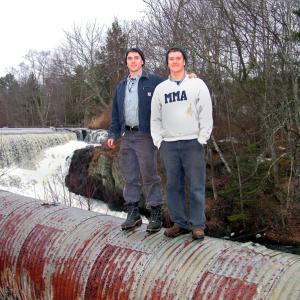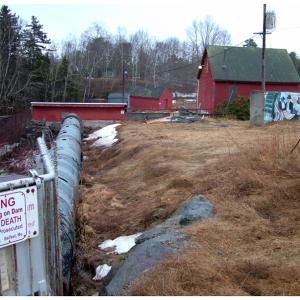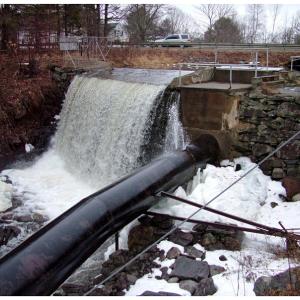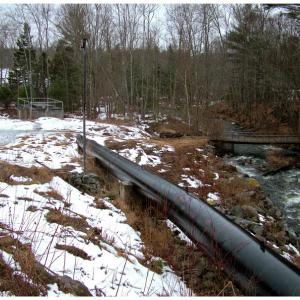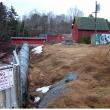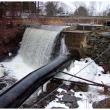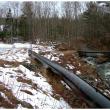Putting 'The Mighty Goose' back to work in Belfast
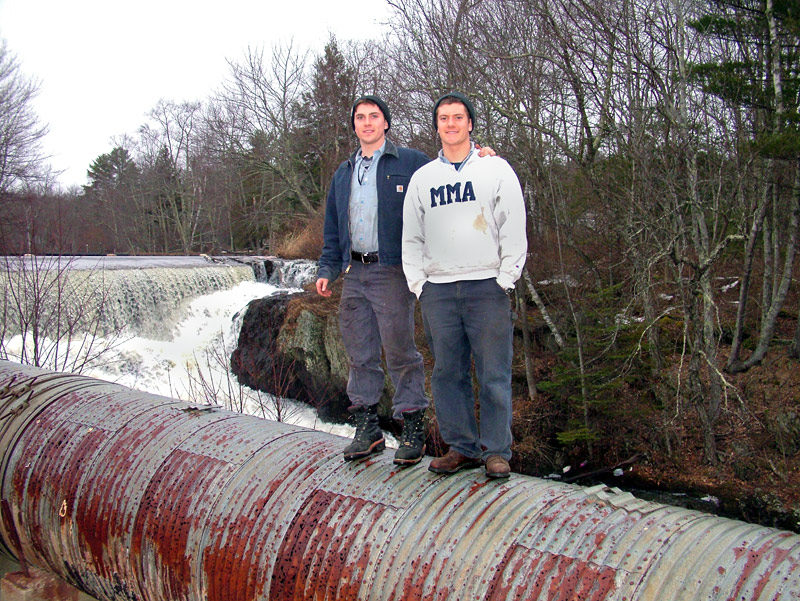 Nicholas Cabral, left, and Nicholas Berner on the penstock at Mill Dam, part of the Goose River hydroelectric generating system they recently bought and plan bring back online. (Photo by Ethan Andrews)
Nicholas Cabral, left, and Nicholas Berner on the penstock at Mill Dam, part of the Goose River hydroelectric generating system they recently bought and plan bring back online. (Photo by Ethan Andrews)
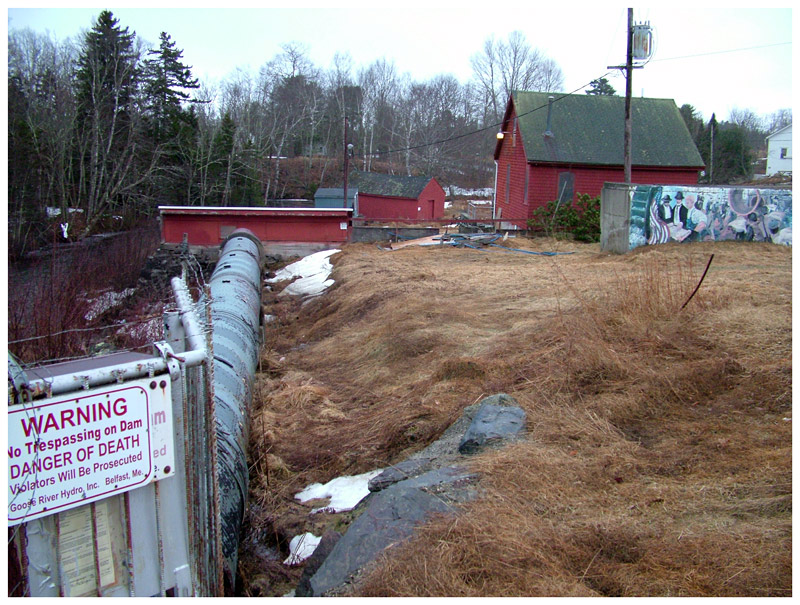 Looking south from Mill Dam. The Goose River Hydro office, formerly of the Sherman & Co. leatherboard mill, is the red building visible at right. (Photo by Ethan Andrews)
Looking south from Mill Dam. The Goose River Hydro office, formerly of the Sherman & Co. leatherboard mill, is the red building visible at right. (Photo by Ethan Andrews)
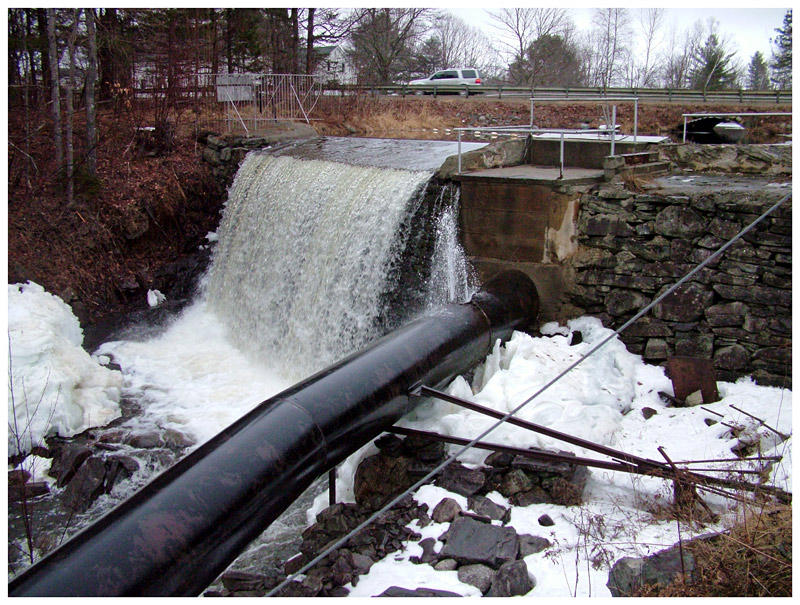 The power generating equipment at Mason Pond is among the newer stock in the Goose River Hydro system and would likely be the first to generate power. (Photo by Ethan Andrews)
The power generating equipment at Mason Pond is among the newer stock in the Goose River Hydro system and would likely be the first to generate power. (Photo by Ethan Andrews)
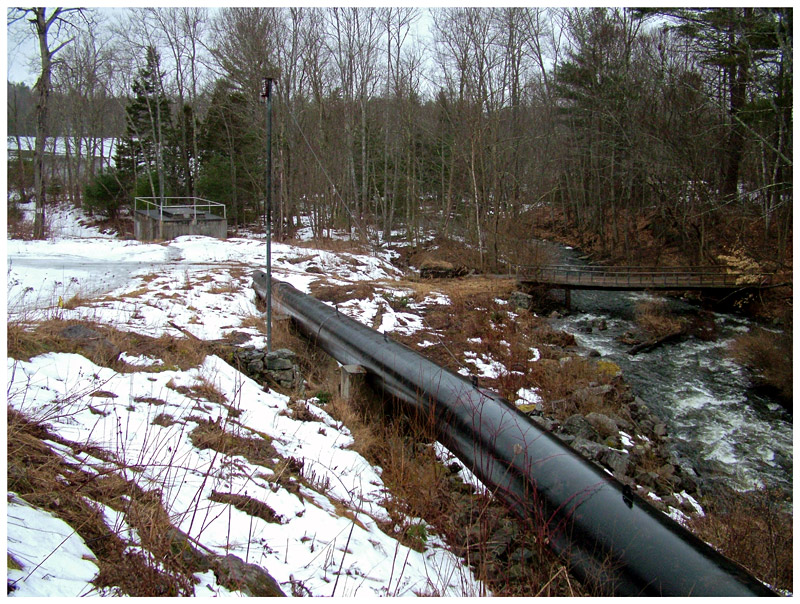 The penstock at Mason Pond diverts water into a generating station, while the river travels on at right. (Photo by Ethan Andrews)
The penstock at Mason Pond diverts water into a generating station, while the river travels on at right. (Photo by Ethan Andrews)
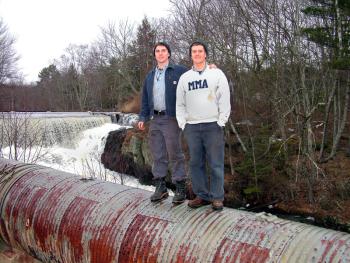 Nicholas Cabral, left, and Nicholas Berner on the penstock at Mill Dam, part of the Goose River hydroelectric generating system they recently bought and plan bring back online. (Photo by Ethan Andrews)
Nicholas Cabral, left, and Nicholas Berner on the penstock at Mill Dam, part of the Goose River hydroelectric generating system they recently bought and plan bring back online. (Photo by Ethan Andrews)
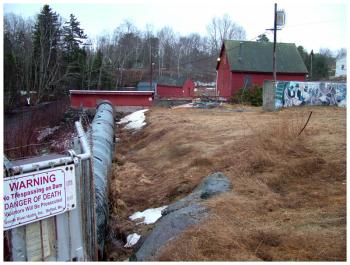 Looking south from Mill Dam. The Goose River Hydro office, formerly of the Sherman & Co. leatherboard mill, is the red building visible at right. (Photo by Ethan Andrews)
Looking south from Mill Dam. The Goose River Hydro office, formerly of the Sherman & Co. leatherboard mill, is the red building visible at right. (Photo by Ethan Andrews)
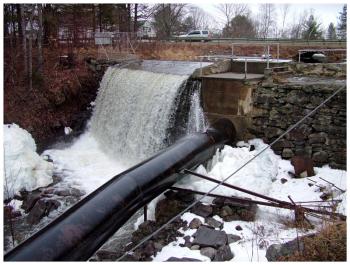 The power generating equipment at Mason Pond is among the newer stock in the Goose River Hydro system and would likely be the first to generate power. (Photo by Ethan Andrews)
The power generating equipment at Mason Pond is among the newer stock in the Goose River Hydro system and would likely be the first to generate power. (Photo by Ethan Andrews)
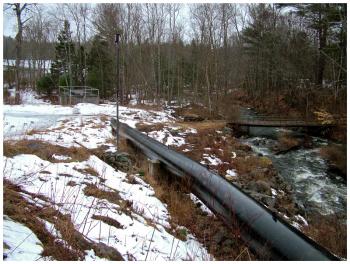 The penstock at Mason Pond diverts water into a generating station, while the river travels on at right. (Photo by Ethan Andrews)
The penstock at Mason Pond diverts water into a generating station, while the river travels on at right. (Photo by Ethan Andrews)
BELFAST - Nicholas Berner and Nicholas Cabral, third year students at Maine Maritime Academy, recently made one of many trips from Castine to their new office in Belfast, an unassuming building off Swan Lake Avenue next to an unassuming river once connected to mill that no longer exists.
Such are the landmarks in rural Maine.
An unnavigable stream, which empties into the river on the eastern side, opposite the wharves.
— Description of Goose River from History of the City of Belfast, Joseph Williamson, 1877.
The office was most recently home to Goose River Hydro, an electric generation business comprising five dams and three power station stations. Berner and Cabral bought the business in February with plans to revive the system, pieces of which date back 150 years, modernize it and maybe more.
“The Nicks,” as the friends and business partners have become known in Belfast, didn't plan to get into the hydroelectric business. What they did know was that they wanted to be their own bosses.
As part of a course on renewable energy, they visited the Goose River and saw the hydroelectric system there. The turbines had stopped turning several years earlier, but Berner and Cabral saw an opportunity.
“At first we were joking about it,” Cabral said. “We we’re like: let’s buy this thing.”
Later they ran the numbers and realized it might actually work.
There were details like whether they would be able to get premium rates for renewable energy and how much repairs and upgrades to the equipment would cost. But a big piece of the equation — the capacity of the river — was well established.
Before the industrial revolution, Goose River spilled off the southern end of a small, pasture encircled body of water called Goose Pond. From there, it cut a meandering path to Belfast Bay, roughly six miles south as the crow flies.
As a body of water, the river would have been unremarkable if not for the impressive 180-foot vertical drop from source to mouth. As hydropower goes, it’s all about the vertical drop, and early machine age entrepreneurs were quick to tap into Goose River’s potential.
The first applications were hydro-mechanical — the river water used to drive machinery in mills, among them Mason’s saw mill, Kelley’s axe factory, a trip hammer maker, a grist mill, a tannery, a fulling mill and the Sherman and Co. leatherboard mill, to which the Berner and Cabral’s office building once belonged.
Hydroelectric generation came to Belfast in 1888 when the city built a dam and power station that would provide the first municipal electricity. After 20 years as the city’s sole power source, the dam was sold to a succession of smaller companies until 1921 when it was swallowed up by the big fish of regional utilities, Charles Wyman’s Central Maine Power Co.
By the 1970s CMP started looking to other sources of power. The company invested heavily in nuclear power, including a failed attempt to build a reactor on nearby Sears Island.
There was also a counter-trend toward alternative energy sources.
Larry Gleeson, an executive at Sun Oil Co in Pennsylvania, was headed in this direction when he took a leave of absence and moved with his wife, Cathy, and their young family to Belfast where they spent the next year living in the same leatherboard mill office used by Berner and Cabral today. The rest of it had recently burned.
The Gleesons bought the Goose River system in 1978, rebuilt portions including the Mill Dam and operated it until Larry died unexpectedly in 2009. Cathy said she quickly realized the business was too much work for one person, but felt strongly the legacy of the river she affectionately called "the Mighty Goose" be passed on to someone with a similar vision.
“The plan [when we bought it] was to make cheap alternative energy,” she said. “It fell out of favor for a while, but it’s coming back again.”
In late 2011, the city took an option on the business with the idea of offsetting the cost of power for municipal buildings using CMP’s “net metering” program. After studying the system, however, the city let the option expire in March 2012.
When Cabral and Berner first approached Gleeson last spring, the business was under contract to another potential buyer. That deal fell through and Berner and Cabral negotiated with Gleeson through the fall, closing a deal in February that included the business, assets, and perhaps most importantly the operating licenses.
“That’s one of the toughest things to obtain, getting those water rights for generating power,” Cabral said. “So that was key.”
Under federal law, rivers are public trusts governed by states, but states offer a number of “extended rights” options for commercial uses like fishing, water extraction and power generation.
“In our case, all we’re doing is taking the water out for a minute, using it to produce electricity and putting it back,” Cabral said.
Fish migration, a major hurdle for some hydroelectric developments, was found not to be a big issue in the case of Goose River, Cabral said, because the river opens into a working harbor. Cabral’s source was a city-commissioned engineering report.
Kittredge had a different interpretation of the findings around fish migration, which he said could range from no cost to millions of dollars at the time the license is renewed, depending upon regulations.
“It was too much of a chance for the city,” he said, adding that the profit margin would have been small and the payback slow.
“But we’re happy to see there’s new ownership and goals for it to be into productive use. To that extent, we support them,” he said.
Cabral said the current operating license is valid through 2020. In the meantime, the business partners said their plan is to get those portions of the system that are in better shape running sooner to help offset the cost of repairing more dilapidated pieces like the penstock by the site of the old leatherboard mill. The Mason's Pond station could be running within a few months, he said.
Berner and Cabral put a conservative estimate of the payback at eight or nine years. In the long term, they are hoping the rehabilitation of Goose River hydroelectric system could serve as a model for tapping into the potential of the many unused dams around New England.
“It’s just free energy flowing away,” Cabral said.
Ethan Andrews can be reached at news@penbaypilot.com
Event Date
Address
United States

